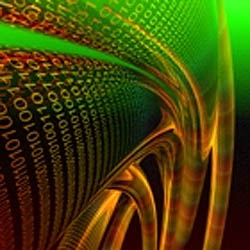So what happens when most of your “gear” is actually software? What good is that stack of freshly soldered MIDI cables when you’re trying to send timing signals from your digital audio workstation (DAW) to your virtual drum machine? What if you want to route the audio output of your software synthesizer to your sequencer so that you can apply a virtual gate to it? In that case, neither a balanced nor an unbalanced cable will do you much good.
What you need are virtual cables: those clever inventions that function just like real hardware cables, except that they’re actually software that connects one program to another. Here’s a closer look at how they work.
Virtual I/O
To get MIDI Timing Clock (or any MIDI message) from your sequencer to your software drum machine, you must use a utility commonly known as a virtual MIDI cable. The cable may appear as a function integrated into both programs, or it may be a separate application that shows up in the list of MIDI ports available to the two programs. Either way, it’s a software connection — an internal pathway — that passes the beat-clock signal between the two programs in a manner similar to the way a physical MIDI cable passes a signal between two hardware devices.
Getting your software synthesizer’s audio output back into your DAW works in like fashion, except you use a virtual audio cable to make the connection. The concept resembles that of an audio bus, except that a bus is ordinarily restricted to making connections within a DAW’s mixer. Like a physical patch cable, a virtual audio cable connects one software application’s audio output with another’s audio input.
Increasingly, virtual audio and MIDI connections are being integrated into host programs. When a soft synth is implemented as a plug-in or a virtual instrument, it appears as a prewired audio insert within your sequencer, and it then shows up as an available MIDI output device on a MIDI track. That’s an ideal arrangement; however, not all software synths are available as plug-ins, and the synth you want may not be available in the plug-in format you need. In either case, you’ll need a virtual cable.
Generally speaking, virtual cables come in two types: interconnection standards and ancillary applications. When two programs support the same interconnection standard, they see each other as I/O options. That’s the next best thing to operating as a plug-in, because it’s extremely convenient. If the “gear” you want to hook up doesn’t work as a plug-in and doesn’t support a common interconnection standard, you must use a separate application to emulate a physical cable. Although that is a bit less convenient, it is nevertheless a potentially powerful and useful tool for your virtual toolkit.
Bus Ride
Let’s take a closer look at the example I mentioned earlier and see how to lock a software drum machine to a DAW using MIDI Timing Clock. For this example, I’ll use a Macintosh running Digidesign’s Pro Tools LE and Koblo’s Gamma9000. Because I’ll be using Opcode’s Open Music System (OMS) to organize the MIDI setup, I will make the MIDI connections through a virtual pathway that is called the IAC bus.















